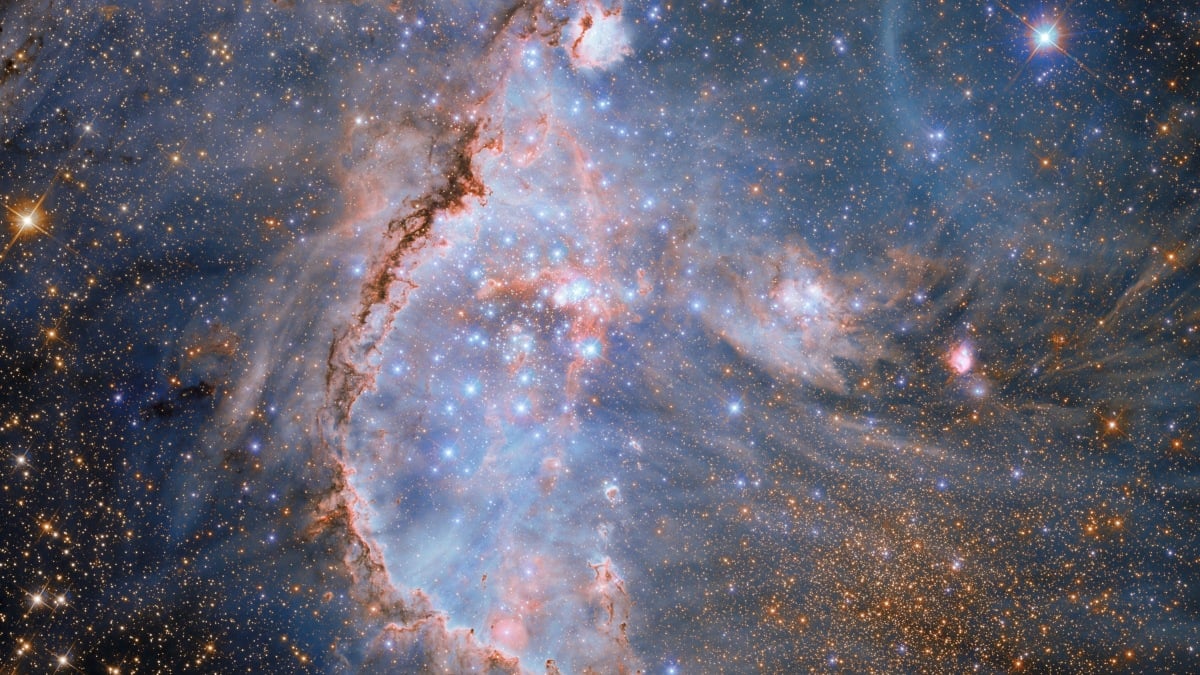
The Hubble Telescope Captures an Impressive Star Nursery in a Nearby Galaxy.
It is a look at the early moments of the universe.
A recent image captured by the Hubble Space Telescope offers the most detailed view of NGC 346, a famous stellar landscape located in the Small Magellanic Cloud. This tiny universe, situated about 210,000 light-years away in the constellation of Tucana, is considered a home for star formation. Although the cluster has been studied before, this is the first time data from three wavelengths of light—infrared, visible, and ultraviolet—have been combined into a single image, resulting in a splendid representation of the influence of star birth on its surroundings.
The Small Magellanic Cloud, being poorer in heavy elements than helium, presents conditions that reflect what could have been observed in the early universe. According to the European Space Agency, this aspect makes it a natural laboratory for studying how stars formed billions of years ago, when the cosmos was still in its early stages. Hubble and NASA, in cooperation, have enabled scientists to capture this unique view from its low orbit around Earth.
With over 2,500 young stars shining blue in the Hubble image, this cluster is characterized by its composition mainly of hydrogen and helium. Stellar cores are considered factories of elements; for example, the cores produce carbon, which is essential for life on Earth. After exploding in supernovae, these stars scatter heavier elements into interstellar space, seeding the ingredients for new stars and planets.
As it is estimated that most of the chemical elements in the universe were generated in stellar explosions, scientists believe that the first stars were composed almost entirely of hydrogen and helium, the primordial materials from the Big Bang. Over time, as stars died and released heavier elements, subsequent generations of stars formed with more diverse and complex compositions.
Surrounding the cluster in the Hubble image is a bright pink nebula, where young hot stars emit ultraviolet light, illuminating the surrounding hydrogen gas. These luminous areas are ephemeral and only shine while the massive stars that power them exist, which have a lifespan of only a few million years compared to the universe's 13.8 billion years. The dark dust clouds swirling around them represent the remnants of the original material that has not yet been displaced by the growing stars, which clear the surrounding space through intense radiation and stellar winds.
Recent research using the Webb Telescope, Hubble’s powerful infrared companion, has examined ten stars within the same cluster, revealing that despite their relatively advanced ages, they still possess significant disks of gas and dust that may eventually form new planets. This contradicts the previous belief that these primitive stars would have quickly lost their light disks within a period of two or three million years, suggesting that there is more time for planetary formation.



